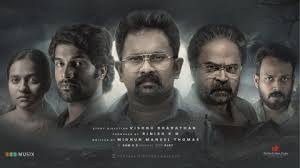Discover how background music (BGM) and sound effects shape the suspense and fear in South Indian thrillers. Learn the science behind jump scares, sound frequencies, and emotional manipulation in cinema.
South Indian thrillers have mastered the art of storytelling through sound. From eerie background music (BGM) to sudden jump scares, every auditory element plays a crucial role in shaping the viewer’s experience. But what makes these sounds so effective? How do filmmakers use sound frequencies, silence, and psychological cues to evoke fear and suspense? This article explores the science behind the soundscapes of South Indian thrillers and how they impact the audience.
The Role of BGM in Building Suspense
The Psychology of Sound in Cinema
Sound in cinema is more than just an accompaniment to visuals; it actively influences emotions and perceptions. Background music in South Indian thrillers is crafted to heighten tension, create anticipation, and subtly manipulate the viewer’s emotions.
Techniques Used in BGM
- Low-Frequency Sounds: Deep, rumbling sounds create unease, often signaling impending danger.
- Dissonance: The use of discordant sounds makes viewers feel uncomfortable and anxious.
- Repetitive Motifs: Recurring musical themes reinforce certain emotions and connect different scenes.
Notable Examples
- Vikram Vedha (2017): The use of heavy percussions and rhythmic patterns enhances the cat-and-mouse tension.
- Ratsasan (2018): A mix of eerie synth and orchestral sounds keeps the audience on edge.
The Science Behind Jump Scares
What Makes a Jump Scare Effective?
A jump scare works by exploiting the brain’s response to sudden, unexpected stimuli. It typically involves three stages:
- Tension Build-Up: Slow, eerie music or complete silence primes the audience.
- False Alarm: A moment of relief before the actual scare, making it more effective.
- Sudden Stimulus: A loud noise, abrupt musical cue, or unexpected visual shocks the viewer.
Sound Frequencies and Jump Scares
- Infrasound (Below 20 Hz): Used to create a sense of unease without being consciously heard.
- Sudden Volume Spikes: The sudden increase in decibels triggers a fight-or-flight response.
- High-Pitched Screeches: Mimic natural danger sounds (e.g., screaming), triggering instinctual fear.
Examples in South Indian Cinema
- Game Over (2019): The strategic use of silence followed by loud, jarring sounds intensifies the psychological horror.
- Pizza (2012): Uses a combination of whispers and sudden bursts of sound to create a terrifying atmosphere.
Silence as a Tool for Fear
Sometimes, silence is more terrifying than sound. Filmmakers use silence to amplify tension, making even the smallest noise feel deafening and significant.
The Impact of Silence
- Forces the audience to anticipate sound, increasing tension.
- Makes unexpected noises more startling.
- Enhances realism, making scenes feel more immersive.
Case Study: Maya (2015)
This film masterfully uses prolonged silence before sudden auditory shocks, making every small noise terrifyingly significant.
How Sound Manipulates Emotion
Creating a Psychological Connection
Music and sound effects tap into primal human instincts, triggering specific emotional reactions:
- Slow, deep tones create a sense of dread.
- High-pitched notes evoke anxiety and urgency.
- Sudden sound shifts generate shock and surprise.
Cultural Influence on Sound Perception
South Indian cinema often incorporates local instruments like the nadaswaram and mridangam to create unique soundscapes that resonate with regional audiences.
The Future of Sound in South Indian Thrillers
Advancements in Sound Technology
- 3D Audio & Dolby Atmos: Provides an immersive sound experience.
- AI in Sound Design: Helps create dynamic, adaptive soundtracks.
- Binaural Audio: Simulates real-life hearing, making horror sequences more immersive.
The Role of Sound in Evolving Narratives
As thrillers become more sophisticated, sound design continues to evolve. Filmmakers experiment with new techniques to push the boundaries of auditory storytelling.
Sound is an essential, yet often overlooked, aspect of South Indian thrillers. From haunting BGM to pulse-pounding jump scares, sound design shapes the psychological and emotional experience of the audience. Understanding the science behind sound allows us to appreciate the meticulous craftsmanship that goes into creating these spine-chilling cinematic moments.
FAQ
1. Why is sound so important in thrillers?
Sound creates atmosphere, builds suspense, and enhances emotional impact, making scenes more immersive and effective.
2. What is infrasound, and how is it used in horror films?
Infrasound is a low-frequency sound (below 20 Hz) that can cause unease and fear without being consciously perceived.
3. How do South Indian thrillers differ in their use of sound from Hollywood films?
South Indian thrillers often integrate traditional instruments and unique rhythmic patterns, creating a distinct auditory identity.
4. Can silence be scarier than loud noises in thrillers?
Yes. Silence builds tension and makes sudden noises more shocking, increasing the overall fear factor.
5. What technological advancements are shaping the future of sound in cinema?
3D audio, AI-driven sound design, and binaural recording techniques are revolutionizing how sound is used in films.
